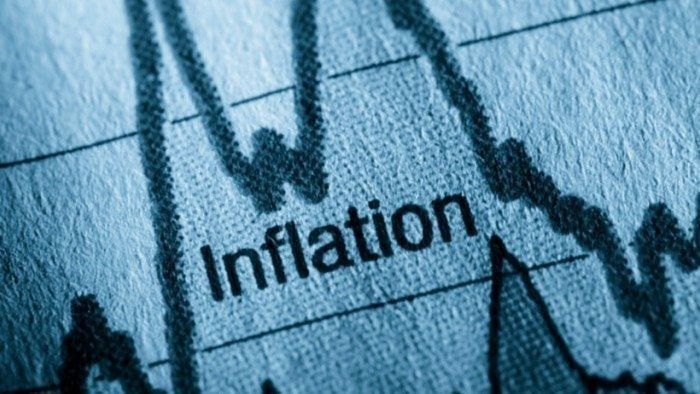
In a surprise move, the Monetary Policy Committee (MPC) of the Reserve Bank of India decided to pause rate hikes, after increasing the interest rate in the previous six consecutive meetings.
It has increased the repo rate by 250 basis points since May 2022. The fourth quarter estimate of consumer price index (CPI) inflation was 6.2%, which is much higher than the 5.7% projected in the February MPC statement and yet, it took the decision to pause. Considering that the inflation rate, particularly the core inflation rate, has remained sticky, the expectation in the market was of an increase of 25 basis points.
The reasoning behind the pause was that the 250 basis points increase in the interest rate is still working through the system. The MPC has also stated that this is only a ‘pause’ and not a ‘pivot’, and it would be ready to act should the situation require. However, since its own forecast of inflation in 2023-24 is 5.2% and the highest rate of inflation projected is 5.4% in the third and fourth quarters, one can expect the interest rate to remain stable for at least the next two quarters.
Although the MPC gave explanations for the significantly lower inflation estimate for 2023-24 at 5.2%, based on household expectations and the projections by other forecasters, there are significant downside risks. Nevertheless, the inflation projections look too optimistic, and the Committee seems to be more eager to accommodate growth concerns. Considering the decision of OPEC to cut crude oil output, the risk is real.
And an erratic monsoon can create trouble on the food front. Despite the statement that the policy is being calibrated to align with the target of 4% in the medium term, it seems the MPC’s focus is on soft-landing the economy within the upper bound of the target, while accommodating growth concerns.
The MPC is quite optimistic about GDP growth in 2023-24 as well. The 2022-23 growth is projected at 7%, and for 2023-24, the growth is estimated at 6.5%. The forecasts by most other forecasters are much lower. The World Bank projects growth at 6.3%, ADB at 6.4%, and Nomura has projected growth at a much lower rate of 5.8%. The quarterly break up of growth shows the economy growing at 7.8%, 6.2%, 6.1%, and 5.9%, respectively, in the four quarters. In fact, the growth forecast in the first quarter at 7.8% looks very optimistic as this is over the high first-quarter growth of the last year at 13.2%. Thus, there is no base effect and there are no indications of acceleration, either.
Now that the monetary policy stance is known, the government will have to take measures to accelerate growth. This would require measures to deal with macroeconomic as well as structural issues. The major macroeconomic policy issue that needs to be addressed is arresting the declining trend in savings and investment in the country. The gross capital formation as a ratio of GDP in constant prices declined from 39.6% in 2011-12 to 32.7% in 2021-22, though it is projected to increase to 34% in 2022-23.
Arresting this decline would require significant increases in both government capital expenditure and private sector investment. The Union budget has partially addressed the issue by increasing allocation to capital expenditure. However, it is doubtful whether the states would maintain their capital expenditures. Besides, with the fiscal deficit of the Centre budgeted at 5.9% of GDP in the Union budget and another 3% in the state budgets, the aggregate deficit could be close to 9% of GDP.
As the household sector’s financial savings rate is just about 8.5%, there is hardly any borrowing space available to the private sector. The increases in the policy rate are yet to play out their course, and as it does, the cost of borrowing by the private sector is likely to be high, putting a dampener on new investments. The RBI has withdrawn a considerable amount of liquidity over the past year, but in the first half of 2023-24, the large volume of government borrowing to maintain the expenditure increase may require additional injection of liquidity to the economy, including undertaking open market operations, which could put additional pressure on prices.
Along with pushing up growth, expanding employment opportunities is going to be a major challenge. It is clear that the structural shift in the growth pattern is towards the services sector, where the employment opportunities for the large number of semi-skilled and unskilled persons joining the workforce is limited. Therefore, it is imperative to focus on accelerating investments in labour-intensive manufacturing to absorb millions of new workers joining the workforce. In addition, labour has to be absorbed from the overcrowded low-productive agricultural sector also.
Furthermore, to take advantage of the fast-changing geopolitical situation occasioned by the deteriorating relationship of the US with China and the adoption of China-plus-one policy by many investors from the West, important structural changes in labour reforms, land acquisition problems, governance improvements to improve the ease of doing business are necessary.
More importantly, tariff levels have shown a significant increase during the last seven years, and this is particularly so in the case of many inputs. Exports can rise only when the economy is competitive, and experience has shown that protectionism does not help matters. Exports become non-competitive when the finished products have to bear high import duties on their inputs. If we have to take advantage of China-plus-one policy and expand the labour-intensive manufacturing sector, the government will have to reverse the protectionist trend and enter into many bilateral trade agreements, besides undertaking the structural reforms mentioned above.
(The writer is Chief Economic Adviser, Brickwork Ratings)